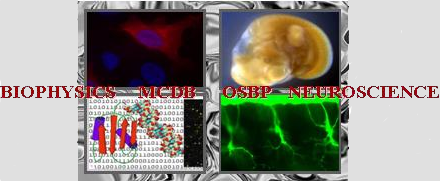Poster abstracts
Poster number 33 submitted by Hieu Nguyen
Cross-species analysis of piRNA evolution in nematodes
Hieu Nguyen (Department of Biological Chemistry and Pharmacology, The Ohio State University), Benjamin Pastore (Department of Biological Chemistry and Pharmacology, The Ohio State University), Wen Tang (Department of Biological Chemistry and Pharmacology, The Ohio State University)
Abstract:
Piwi-interacting RNAs (piRNAs) are an ancient class of small non-coding RNA that suppress transposable elements (TEs) in animal germlines, thereby maintaining genome integrity and fertility. While piRNA biogenesis and function have been extensively studied, the mechanisms that drive piRNA evolution in animals have yet to be investigated. To address this gap in our understanding of piRNA biology, We investigated piRNA evolution through comparative genomics of three Caenorhabditis nematodes: C. elegans, C. briggsae, and the newly described C. inopinata, representing different evolutionary branching points (C. elegans-C. briggsae: ~100 million years; C. elegans-C. inopinata: ~10 million years). Thus, studying the piRNA pathway within these nematodes can yield key insights into how the piRNA pathway is evolving over time. Using high-throughput RNA sequencing and bioinformatics, we characterized piRNAs in C. inopinata and compared the sequence, genomic organization, and targets across all three species. Our preliminary analysis shows that piRNA sequences in closely related species evolve rapidly compared to other RNAs, such as microRNAs and tRNAs. Furthermore, we identified dramatic rearrangements of piRNA gene organization, suggesting a dynamic regulation mechanism for generating and maintaining piRNA sequences within animal genomes. To comprehensively analyze piRNA targets in each nematode, we performed de novo TE annotation and observed a striking expansion of LTR transposons in C. inopinata. Inspired by this finding, future work will be conducted to evaluate the dynamic co-evolutionary arms race between the piRNA pathway and TE expansion. Our analysis of the sequences, genomic organization, and targets of piRNAs across these distinct nematode species will help illuminate the evolutionary plasticity of piRNA systems and their fundamental role in maintaining fertility in animals.
References:
Pastore B, Hertz HL, Tang W. Comparative analysis of piRNA sequences, targets and functions in nematodes. RNA Biol. 2022 Jan;19(1):1276-1292. doi: 10.1080/15476286.2022.2149170
Kanzaki, N., Tsai, I.J., Tanaka, R. et al. Biology and genome of a newly discovered sibling species of Caenorhabditis elegans. Nat Commun 9, 3216 (2018). https://doi.org/10.1038/s41467-018-05712-5
Weick EM, Miska EA. piRNAs: from biogenesis to function. Development. 2014 Sep;141(18):3458-71. doi: 10.1242/dev.094037
Parhad SS, Theurkauf WE. Rapid evolution and conserved function of the piRNA pathway. Open Biol. 2019 Jan 31;9(1):180181. doi: 10.1098/rsob.180181
Keywords: piRNA, comparative genomics, evolution
